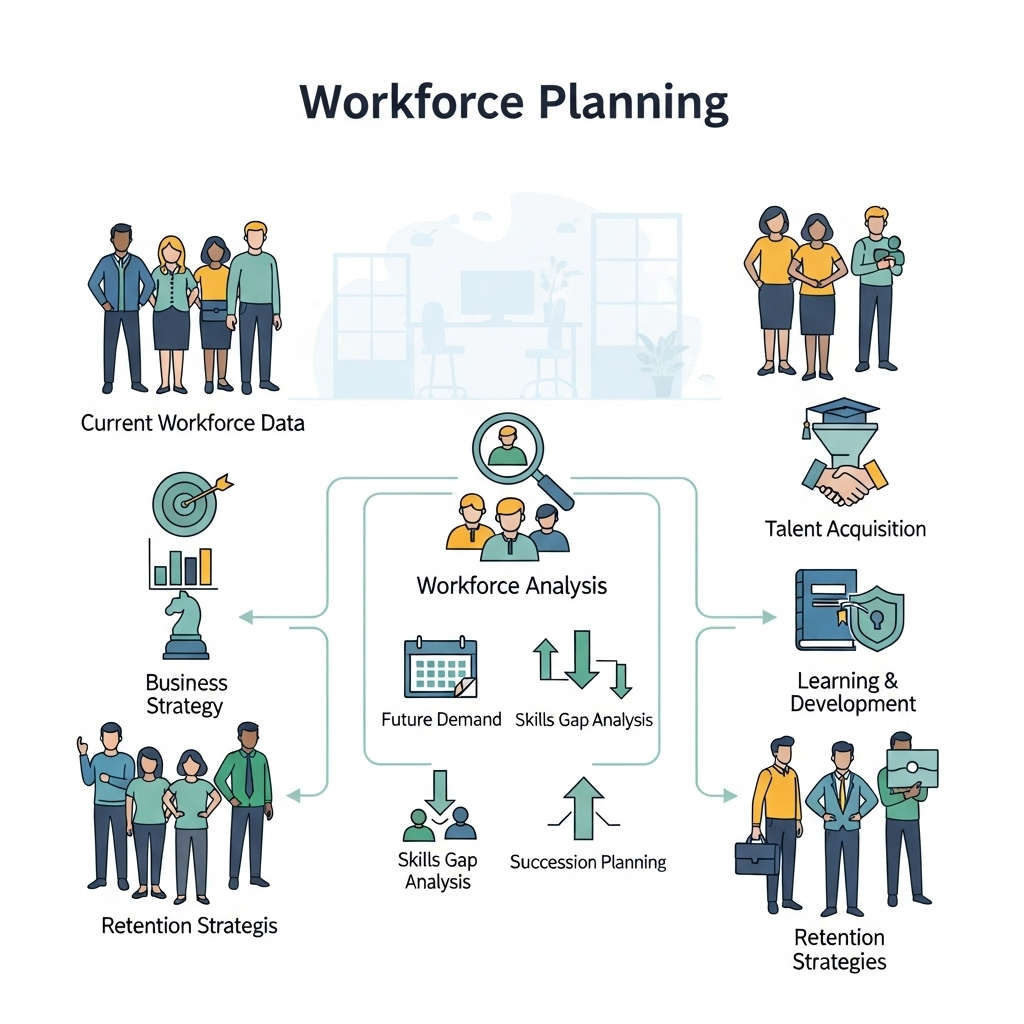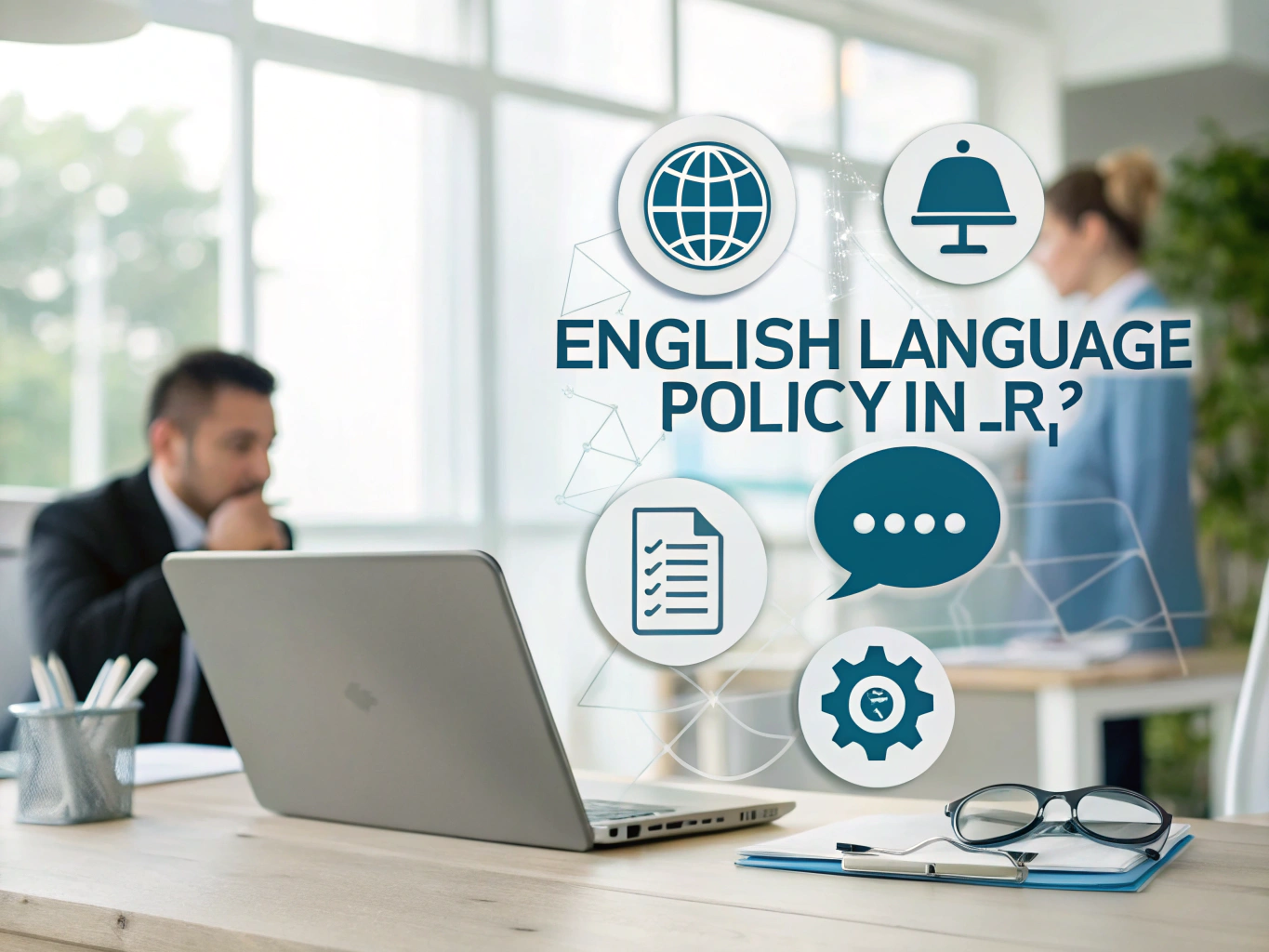Definition
Workforce planning is the strategic process of ensuring your organization has the right people in the right roles at the right time. It involves analyzing current employee capabilities, forecasting future needs, and proactively addressing any gaps in skills or talent. Think of it as your roadmap for aligning your workforce with your business objectives.
Key Components
Workforce planning is not just a one-off task; it’s an ongoing process that incorporates several crucial elements. Let’s break down the main components that make up effective workforce planning:
- Current Workforce Assessment: Begin by evaluating the skills, roles, and performance of your existing employees. This could involve performance reviews, skill assessments, and feedback sessions. For example, if you run a tech company, you might find that your software developers are skilled in certain programming languages but lack expertise in emerging technologies like AI or blockchain.
- Future Needs Forecasting: Anticipate where your business is headed. Are there upcoming projects or market expansions that will require additional talent? If your company plans to launch a new product line, you’ll need to forecast the skills needed to support that initiative, such as marketing specialists or product managers.
- Gap Analysis: Once you know your current capabilities and future needs, identify the gaps. This could be a lack of leadership skills, technical expertise, or even diversity in your workforce. For instance, if your analysis shows a shortage of data analysts, you’ll need to explore how to fill that void.
- Workforce Development Strategies: Create strategies to close those gaps. This might involve training programs, recruitment drives, or even succession planning. If you have promising employees lacking certain skills, offering them targeted training can be a win-win.
- Implementation and Monitoring: Once your plan is in place, communicate it clearly to your team. Set timelines, assign responsibilities, and keep track of progress. Regularly reviewing your workforce plan ensures you stay agile and can adapt to any changes in the business environment.
Importance in the Workplace
So, why does workforce planning matter? Imagine a scenario where your company experiences a sudden surge in demand for its products. Without a solid workforce plan, you might find yourself scrambling to hire new talent, leading to rushed decisions and potential misfits. Alternatively, a well-thought-out workforce plan allows you to respond swiftly and effectively, ensuring you have the right talent ready to meet that demand.
Moreover, workforce planning reduces turnover rates and enhances employee satisfaction. By investing in the right development programs and ensuring employees feel valued and well-matched to their roles, you create a more engaged and committed workforce.
Best Practices
Ready to implement workforce planning in your organization? Here are some best practices to guide you:
- Engage Stakeholders: Involve managers and employees in the planning process. Their insights can provide valuable perspectives on workforce needs. For example, asking team leaders about the skills their teams are lacking can offer a clearer picture of what to focus on.
- Utilize Data and Analytics: Leverage data-driven insights to inform your decisions. Use tools like HR analytics software to gather information on employee performance, turnover rates, and market trends. This data can help you make informed predictions about your workforce needs.
- Stay Flexible: Workforce needs can change rapidly. Regularly revisit and adjust your plan in response to market shifts or organizational changes. For instance, if a new competitor enters your market, you may need to reassess your talent pool and strategies.
- Focus on Diversity and Inclusion: Ensure your workforce planning promotes diversity. A diverse team brings different perspectives and drives innovation. Actively plan for inclusive hiring practices and training programs to create a well-rounded workforce.
- Invest in Continuous Learning: Create a culture that encourages ongoing development. Offer opportunities for employees to learn new skills, whether through workshops, online courses, or mentorship programs. This not only helps fill skill gaps but also retains top talent.
Legal Considerations
When it comes to workforce planning, it’s essential to keep legal considerations in mind. Be aware of labor laws surrounding recruitment, training, and employment practices. For example, ensure that your hiring processes comply with anti-discrimination laws to avoid any legal pitfalls. Keeping documentation of your workforce planning processes can also help demonstrate compliance if required.
Conclusion
In summary, understanding workforce planning is fundamental for any organization looking to thrive in today’s dynamic business environment. By proactively assessing your workforce needs and strategically addressing gaps, you set your organization up for success. Remember, it’s not just about filling positions; it’s about aligning your human capital with your strategic goals. So, take the time to invest in workforce planning, and you’ll reap the benefits of a well-prepared and engaged workforce.




